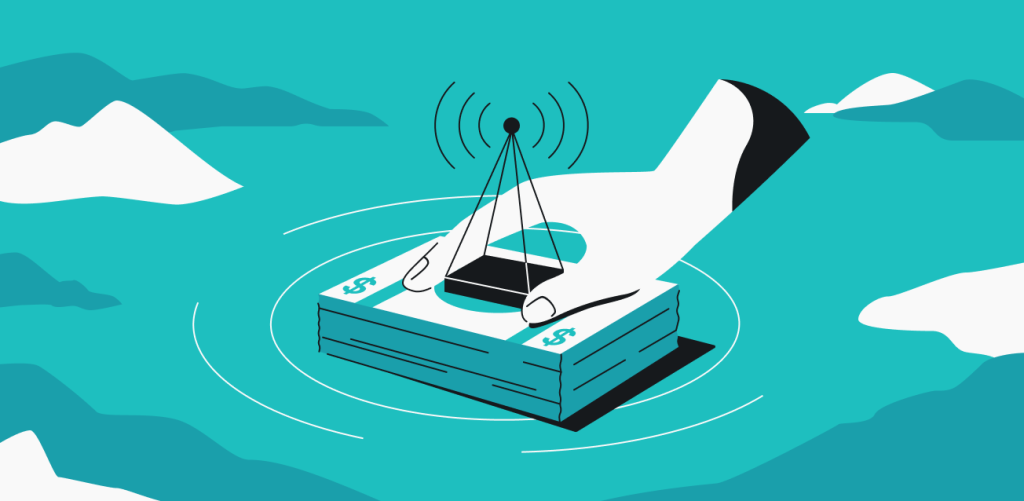
This year saw the continuation of the global digital divide, where 117 countries and regions experienced a marked difference (for better or worse) in internet quality, affordability, and overall value.
While most well-developed countries can afford the internet, some get better quality internet than others, in relation to the prices they pay. On the same account, a poorer quality internet connection could also be considered fair – if it’s affordable. This article will map internet price inequality with findings from Surfshark’s 2022 Internet Value index (IVi).
Introducing Surfshark’s Internet Value index
To illustrate the global divide between internet quality and affordability, Surfshark created the Internet Value index. An extension of the Digital Quality of Life (DQL) index, this report analyzes digital wellbeing in 117 countries or 92% of the global population.
By dividing internet speed by affordability, we’ll discover how many people overpay for the internet globally and how many get theirs at a fair price. We’ll also examine each region in more detail and pinpoint the countries at either end of the spectrum.
Which countries are above or below the global average?
People living in countries with an internet value index above the global average of 0.0729 are classed as having fair internet prices. In contrast, countries below the average are considered to have overpriced internet. The index itself measures internet value in countries and regions from 0 to 1.
Only 4 out of 10 people get their internet at fair prices, while the remaining 61%, living in countries with indices below the global average, overpay for what they get – that’s almost 5 billion people!
Countries with the best and worst internet value
Below is a high-level overview of internet value across the world. As you’ll see, some countries exceeded the average by a fair proportion while others ranked much lower.
Israel had the best overall internet value index (0.6630), which was 9 times higher than the global average, followed by Singapore (0.6186) and Denmark (0.4816).
Yemen had the lowest internet value index (200 times lower than the global average), followed by Zimbabwe and Uganda (0.0007).
Oceania and Europe lead the world in internet value
The chart above shows that Oceania and Europe are clear leaders. Oceania’s internet value index is 2.5 times higher than the global average, while Europe’s is more than 1.5 times higher.
Internet value in North America, South America, and Africa are below average. North America is more than 1.5 times lower than the global average, while South America is around 2.5 times lower. The worst-performing region is Africa, with an index nearly 20 times lower than the global average.
Internet Value index overview for Oceania
Australia ranked 5th in the world, with an index 3.5 times higher than the global average. New Zealand ranked 25th overall, with an internet value index lower than Australia’s but around 1.5 times higher than the global average.
Oceania is the only region using the global average. We’ll now dissect further countries according to the region average.
8 out of 10 Europeans get their internet at fair prices
In Europe, Denmark takes the lead with an index nearly 4 times higher than the European average, followed by France.
In terms of overall internet value, countries in Western Europe tend to perform the best, with a 57.6% higher index than the region’s average. However, internet value is below average by around 25% in two Western European countries, Austria and Belgium.
Half of the 10 highest-ranking European countries are in Western Europe.
Northern European countries perform well in terms of internet value – the subregion’s index is 31.3% higher than the European average. However, Norway, Ireland, Latvia, and Estonia, are all still overpaying for their internet connections.
Eastern Europe performs middle-of-the-line, with its index being around 7% lower than the European average. Romania, which ranks third in the region, is the only Eastern European country in the top ten.
The 3 lowest-ranking countries: Bosnia and Herzegovina, Albania, and North Macedonia, are all located in Southern Europe.
Southern Europe performed the worst out of the region’s four subregions, with a 50.9% lower index than the European average. Out of the 10 lowest-ranking European countries, all but one (Belarus) are in Southern Europe.
Which subregions in Asia have fair internet prices?
In Asia (the most densely populated region), 4 out of 10 people can access the internet at a fair price.
Every country in Southern and Central Asia overpays for their internet connections since they all have an internet value index lower than the regional average.
Israel took the lead in Asia with the best internet value index, followed by Singapore and South Korea.
Out of the five Asian subregions, Eastern Asia performed the best, with an index 64.5% higher than the Asian average. Tajikistan, Pakistan, and Yemen have the worst internet value indexes in Asia.
7 out of 10 North Americans are connecting at a fair price
In North America, 7 out of 10 individuals can access the internet at a fair price. Within this territory, the United States outperforms Canada for internet value.
Did you know rural US overpays for their internet, further expanding the digital divide? For more findings and insights, check out Surfshark’s Internet Value index for the United States.
None of the countries that form part of the Latin American and the Caribbean subregion of North America have above-average internet value. Even Mexico, which ranks third in the region, has an index of 0.0283, which is 1.5 times lower than the North American average.
Chile has the best internet value in South America
In South America, Chile is the leader, followed by Uruguay and Brazil. Bolivia performed the worst, with an internet value index 4.5 times lower than the South American average.
Which countries in Africa have the highest internet value?
In Africa, 4 out of 10 people can access the internet at a fair price. South Africa is the outright leader, with Egypt ranking second, followed by Morocco.
On the other side of the scale, Zimbabwe and Uganda are the lowest-ranking African countries, followed closely by Cameroon.
Mapping the global internet divide for the future
Even economically-affluent countries don’t always have the best internet value when compared on the global or regional stage, and it will be interesting to see how internet affordability, accessibility, and overall value will grow, decline, or stagnate in time to come.
The UN calls for universal internet access as a human right. However, there is still more work to be done in breaching the global internet divide.
Methodology
This study ranks 117 countries and territories (or 92% of the global population) based on the Internet Value index (IVi). The IVi is determined by fixed broadband internet and mobile internet speed-to-affordability ratios. These pillars consist of four indicators that directly influence the quality to affordability aspect:
Indicator 1: time to work to afford fixed broadband internet (hours)
The factor value of fixed broadband affordability was determined by dividing the average monthly price of a fixed broadband package by a country’s average hourly wage (net).
Indicator 2: time to work to afford mobile internet (hours)
Determined the same way as fixed broadband affordability, except using the average price of a 1GB mobile data package.
Indicator 3: median fixed broadband download speed (Mbps)
To determine the median fixed broadband download speed of a given country, we averaged each country’s median download speed values for 12 months between October 2021 and September 2022.
Indicator 4: median mobile internet download speed (Mbps)
Determined the same way as the median fixed broadband download speed.
Sources
United Nations Statistics Division. (2022). Regions and subregions.
United Nations Department of Economic and Social Affairs Population Division. (2021). Population.
Cable.co.uk. (2022). Average 1GB mobile broadband package price, USD.
Cable.co.uk. (2022). Average fixed broadband monthly package price, USD.
Numbeo. (2022). Average monthly net salary (after tax).
US Department of State. (2015). Work week duration, hours.
Ookla Speedtest Global Index. (2022). Median fixed broadband download speed, Mbps.
Ookla Speedtest Global Index. (2022). Median mobile internet download speed, Mbps.
